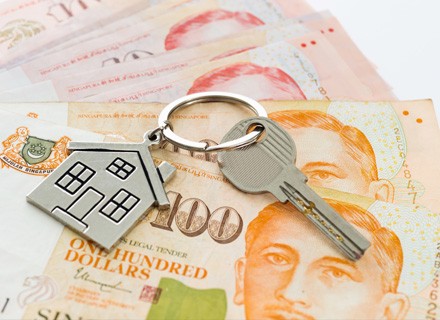In the second quarter of the year amid high inflation, private home prices in Singapore have increased as a result of the high demand from consumers for new construction.
This comes after the first-quarter slowing in price rise, which some experts in Singapore attributed to a hasty response to the most recent set of property regulations put in place in December of last year.
According to flash estimates released by the Urban Redevelopment Authority recently, the total price of private homes increased by 3.2% in the second quarter, driven mostly by the non-landed private home sector, which increased by 3.3%. (July 1).
Following a slow period in the first quarter of this year, analysts said the pick-up in price rise in Singapore was mostly driven by strong buying demand for new condominium launches that were offered at higher benchmark prices.
According to Nicholas Mak, head of research and consultancy at ERA Realty, the price index has returned to a similar range as observed before the property cooling measures went into effect last December, down from the meager 0.7% price gain in the first quarter.
Chief Executive Officer of PropNex Realty, Ismail Gafoor said the price surge in Singapore was unexpected considering the several market risks, such as rising interest rates, inflation, and the upheaval in the stock market.
He added that this may testify to the strength of the property demand, which is predominantly supported by Singaporean buyers.
New launches on the city edge or the remainder of the central area, where home values recovered by 6% in the second quarter, reversing the decrease of 2.7% in the first quarter, were the main drivers of price rise for non-landed private residences.
Strong demand for recent releases like Piccadilly Grand in Farrer Park and Liv @ MB in Mountbatten, which were introduced in May, supported purchasing activity in the city edge sub-market.
With average prices of USD 2,182 per square foot at Piccadilly Grand and USD 2,409 per square foot at Liv @ MB, Gafoor highlighted that both projects experienced strong sales.
Both developments set new benchmark prices, according to Tricia Song, head of research for Southeast Asia at CBRE, as the developers stuck to their asking prices despite rising construction costs and a dearth of unsold inventory.
Despite recent cooling measures and headwinds from the global economy, Song said, “the good showing at the two projects might be indicative that investment and genuine demand and liquidity for well-located projects are still reasonably strong.”
Since selling prices at upcoming launches are likely to stay high and land prices are expected to stay stable, some buyers may also be locking in mortgage rates in advance of anticipated additional interest rate increases, the author continued.
According to some analysts, rising mortgage loan rates may slow down home sales in the long run. Price rise is also predicted to decelerate in the second half of the year as purchasers become more cautious about their purchases.
“Price rises could decrease in the coming months,” said Leonard Tay, head of research at Knight Frank Singapore.
“Rising interest rates will be a natural cooling mechanism in the second half of this year, reining in home purchasers’ purchasing power,” Leonard Tay added.
For planned debuts in the third quarter, like AMO Residence in Ang Mo Kio and Lentor Modern in Yio Chu Kang, analysts predict strong buyer interest.
The sales volume for these mass-market developments could increase in the coming quarter, according to Song of CBRE, “since we anticipate steady interest from upgraders and first-time home purchasers who are mostly unaffected by the latest round of cooling measures.”

